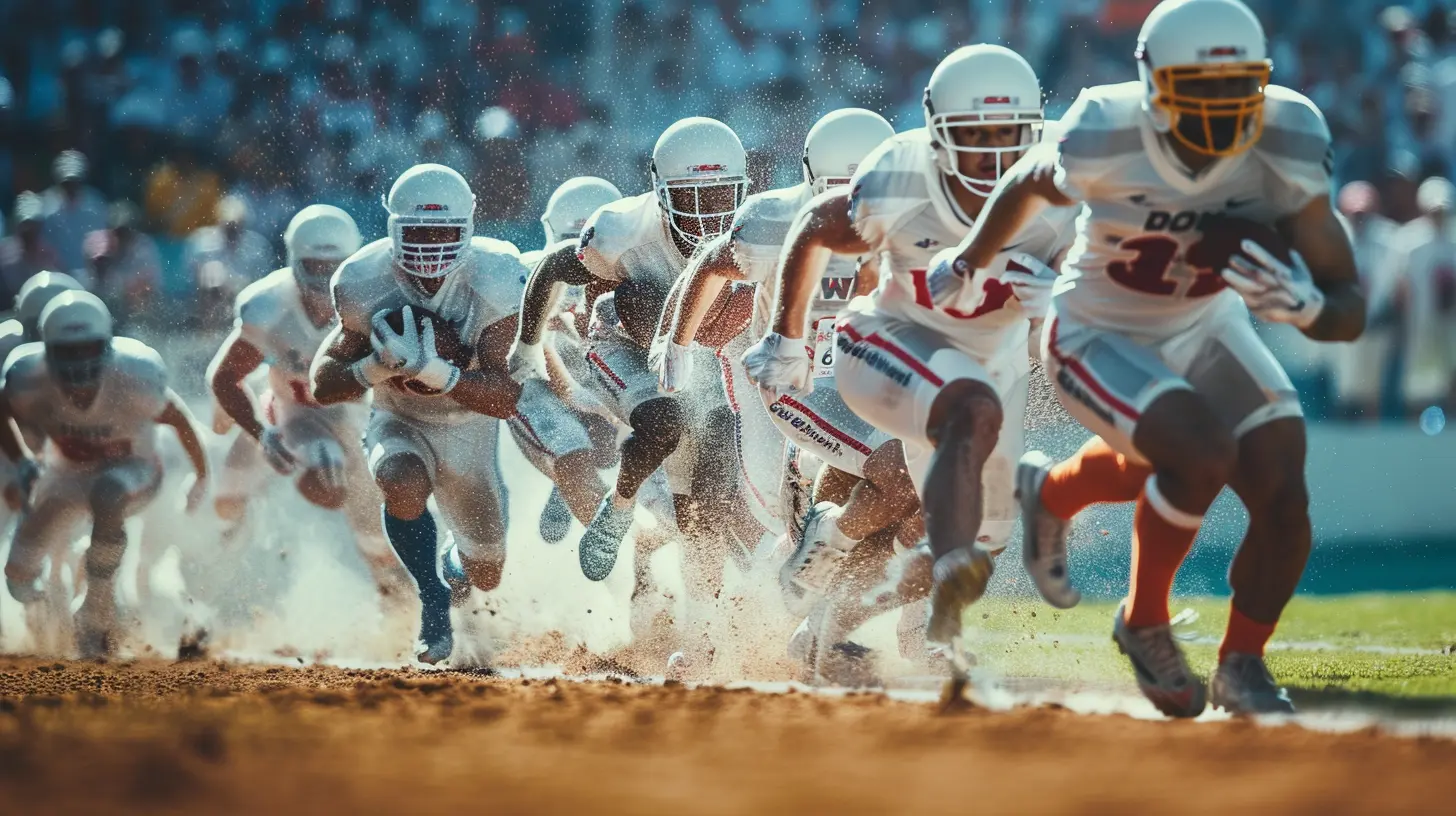Maximizing Team Performance with Rotational Strategies
3 September 2025
In the world of sports, success isn’t just about talent—it's about strategy. One of the most effective ways to optimize team performance is through rotational strategies. Whether you’re coaching a soccer team, managing a basketball lineup, or overseeing a volleyball squad, using a well-thought-out rotation can make all the difference.
But what exactly are rotational strategies? Why do they matter? And how can they be applied to different sports? Let’s break it down and uncover how smart rotations can maximize your team's potential.

What Are Rotational Strategies?
Rotational strategies are planned substitutions or position switches designed to maintain high energy, balance skills, and exploit tactical advantages. It’s about ensuring that every player gets enough rest, plays to their strengths, and keeps the team functioning at peak performance.Think of a sports team like a relay race—if one runner is exhausted, the baton drop is inevitable. The same principle applies in team sports: if key players are overworked, performance dips, and the opponent gains an edge. Rotational strategies prevent this from happening.

Why Rotations Matter in Team Sports
Using a rotation system isn’t just about giving players a break. It’s a game-changing approach that affects stamina, skill distribution, and overall team cohesion. Here's why they’re essential:1. Preventing Fatigue and Injuries
Sports demand endurance, but even the best athletes have limits. Overusing key players can lead to exhaustion or, worse, injuries. With proper rotations, players get the rest they need, reducing wear and tear over time.2. Maximizing Player Strengths
Not every player excels in every situation. Some thrive in high-pressure moments, while others specialize in defensive play or offensive bursts. Rotational strategies allow coaches to place athletes in scenarios where they perform best.3. Keeping Opponents Off Balance
A predictable lineup is easy to counter. But when a team rotates players effectively, opposing teams struggle to adapt, creating opportunities to exploit weak spots.4. Developing Team Depth
Relying too heavily on just a few players can backfire. Rotations help develop younger or less experienced athletes, preparing them for bigger roles and ensuring long-term team success.
Rotational Strategies in Different Sports
Different sports require different approaches to player rotation. Let’s take a deep dive into how rotational strategies work across popular team sports.Basketball: Managing Minutes and Matchups
In basketball, coaches use rotations to balance energy, exploit matchups, and ensure consistent defensive intensity.Key rotation strategies in basketball include:
- Resting Star Players: Even superstars need breathers. Rotating bench players helps maintain peak intensity throughout the game.
- Matchup Adjustments: Subbing in players to counteract an opponent’s strengths—like inserting a defensive specialist to guard a high-scoring opponent—can be a game-changer.
- Small-Ball vs. Big Lineups: Adjusting rotations to go bigger or smaller depending on the game flow can create mismatches that favor your team.
Soccer: Managing Stamina Over 90 Minutes
Soccer is a physically demanding sport that requires careful player management. Coaches use substitutions and positional rotations to keep their squads fresh.Effective soccer rotations involve:
- Late-Game Impact Substitutes: Bringing in fresh legs late in the game can exploit tired defenders.
- Rotating Midfielders: Midfielders cover the most ground, so rotating players in these positions ensures energy levels stay high.
- Tactical Changes: Switching formations or repositioning key players based on the game's flow can influence momentum.
Volleyball: Strategic Player Rotations
Volleyball has a set rotation system, making lineup decisions crucial. Teams must balance offensive firepower with defensive stability.Key volleyball rotation strategies include:
- Specialist Substitutions: Liberos and setters are crucial in specific phases of the game, and rotating them efficiently can significantly impact performance.
- Exploiting Opposition Weaknesses: Rotating hitters to attack weaker blockers can create scoring opportunities.
- Spreading Workload: Rotations help distribute effort so no single player carries the entire offensive or defensive burden.
Baseball: Pitching Rotations and Defensive Shifts
Baseball is unique in that rotations happen on a different scale, mainly through pitching rotations and defensive shifts.Effective baseball rotations include:
- Starting Pitcher Rotations: Ensuring pitchers get adequate rest is crucial for long-term performance.
- Bullpen Management: Using relievers strategically depending on the game situation prevents overuse.
- Defensive Adjustments: Coaches frequently rotate outfielders and infielders to maximize defensive coverage. 
How to Implement an Effective Rotation Strategy
Now that we understand the importance of rotations, how can teams implement them effectively? Here are a few key steps:1. Know Your Players
Every athlete has different endurance levels, skill sets, and mental toughness. Understanding your team’s strengths and weaknesses allows for smarter rotations.2. Plan Ahead
Successful rotations aren’t made on the fly—they’re planned in advance. Coaches should analyze matchups, game tempo, and player conditioning to create the best rotation schedules.3. Communicate With Players
Rotations only work when players buy in. Keeping athletes informed about their roles prevents frustration and builds trust within the team.4. Track Performance Data
Using stats like workload, sprint distance, and recovery time can help fine-tune rotations. The more data a coach has, the better they can adjust their strategies.5. Stay Flexible
No game unfolds exactly as planned. Having a base rotation strategy is essential, but being prepared to adjust on the fly is just as crucial.Common Mistakes to Avoid
Even the best coaches can mismanage player rotations. Here are some common pitfalls to steer clear of:1. Over-Reliance on Star Players
It’s tempting to keep your best athletes on the field or court for extended periods. However, not rotating them out can lead to burnout or injuries.2. Ignoring Bench Players
Every player contributes in some way. Failing to incorporate bench players not only weakens the team over time but also hurts morale.3. Making Rotations Too Predictable
If opponents can guess rotation patterns, they can exploit them. Keeping rotations flexible and unpredictable keeps the other team on edge.4. Poor Timing of Substitutions
A mistimed substitution can disrupt momentum or leave a weak lineup on the field during a crucial period. Reading the flow of the game is key.The Future of Rotational Strategies
As sports science evolves, so too do rotational strategies. With advancements in performance tracking, fatigue monitoring, and real-time analytics, teams can now fine-tune rotations more accurately than ever before.Additionally, load management—a term gaining popularity in professional basketball—shows how crucial rest and rotation strategies are becoming. Expect to see more teams across different sports focusing on planned rest and rotation schedules to maintain peak performance throughout a season.
Final Thoughts
At the end of the day, sports are about balance—balancing energy, skills, and strategy. A team that utilizes rotational strategies effectively can outlast and outplay opponents by ensuring their athletes remain fresh, engaged, and strategically positioned to succeed.So, whether you're coaching, playing, or just enjoying the game, remember this: rotations aren’t just about who gets minutes—they’re about making every minute count.
all images in this post were generated using AI tools
Category:
Team ManagementAuthor:

Everett Davis
Discussion
rate this article
1 comments
Silas Thomas
Great insights! Rotational strategies can truly enhance team dynamics and stamina, ensuring players remain fresh and engaged. Excited to see how teams implement these tactics!
September 20, 2025 at 2:52 AM

Everett Davis
Thank you! I'm glad you found the insights valuable. Excited to see how these strategies evolve in practice!


